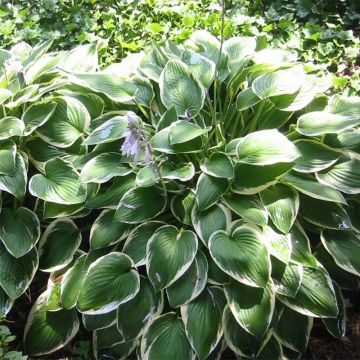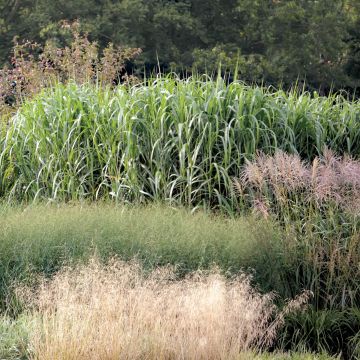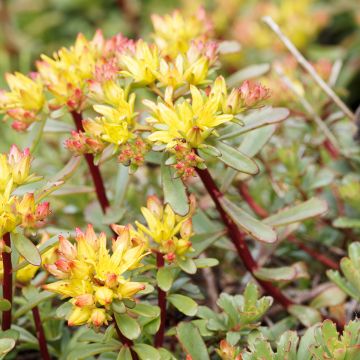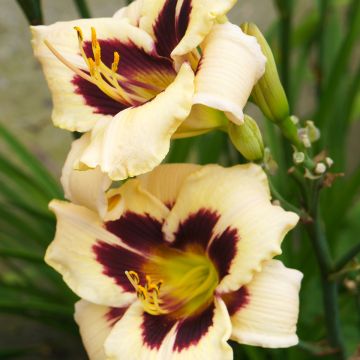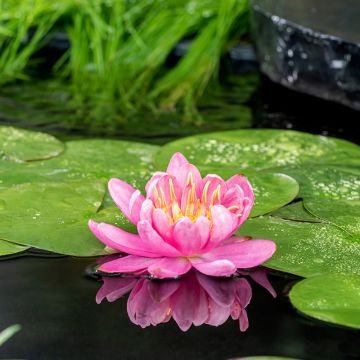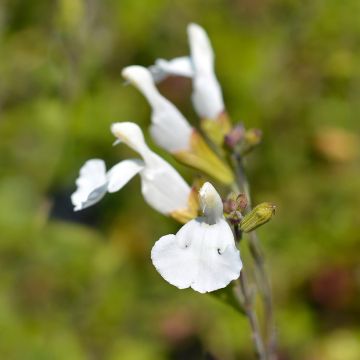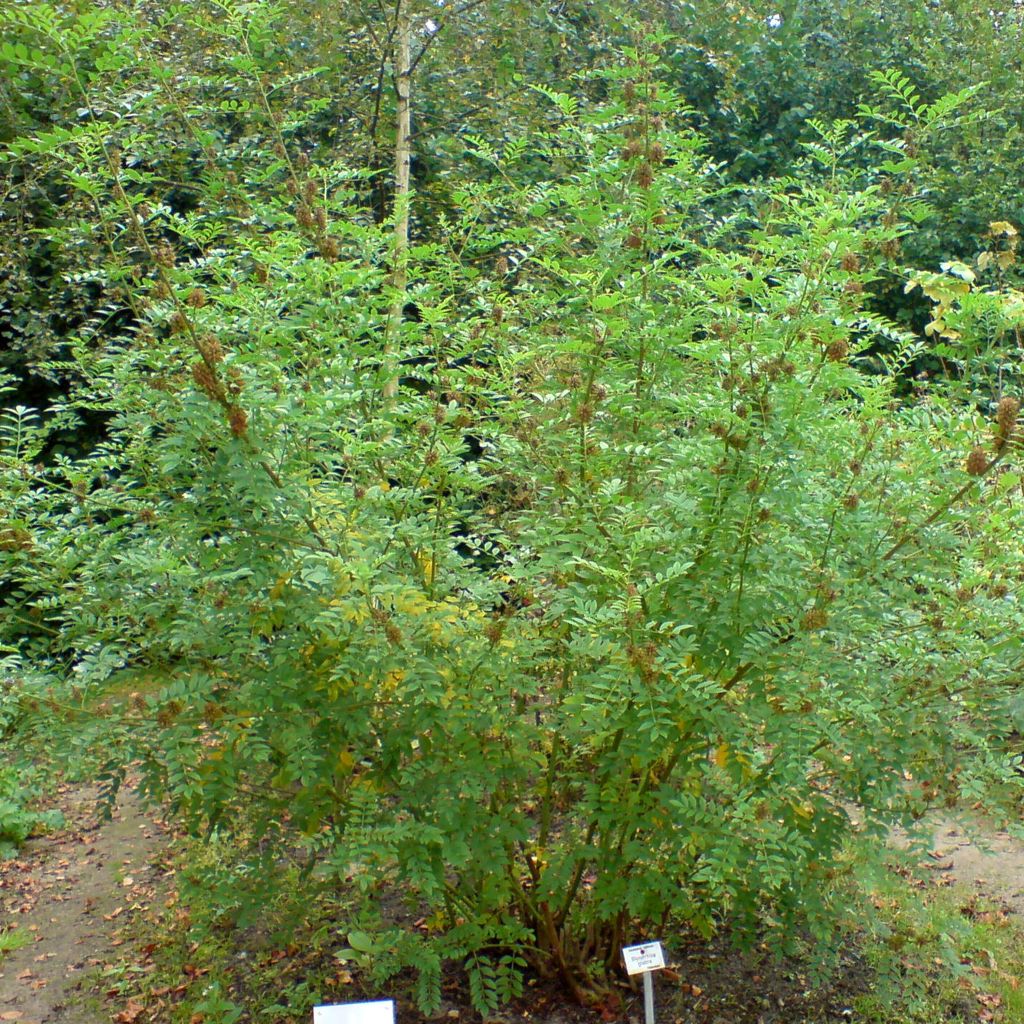

Réglisse, Glycyrrhiza glabra
Glycyrrhiza glabra - Liquorice
Glycyrrhiza glabra
Liquorice, Licorice, Spanish juice plant, Spanish liquorice, Sweetwood
Special offer!
Receive a €20 voucher for any order over €90 (excluding delivery costs, credit notes, and plastic-free options)!
1- Add your favorite plants to your cart.
2- Once you have reached €90, confirm your order (you can even choose the delivery date!).
3- As soon as your order is shipped, you will receive an email containing your voucher code, valid for 3 months (90 days).
Your voucher is unique and can only be used once, for any order with a minimum value of €20, excluding delivery costs.
Can be combined with other current offers, non-divisible and non-refundable.
Home or relay delivery (depending on size and destination)
Schedule delivery date,
and select date in basket
This plant carries a 12 months recovery warranty
More information
We guarantee the quality of our plants for a full growing cycle, and will replace at our expense any plant that fails to recover under normal climatic and planting conditions.
Would this plant suit my garden?
Set up your Plantfit profile →
Description
Glycyrrhiza glabra literally means "sweet root". This large perennial liquorice, better known for its roots than for the plant itself, forms beautiful and decorative clumps, especially in summer, when it is adorned with slender elegant clusters, adorned with light blue to blue-violet pea-like flowers. Its robust rootstock with trailing roots extends over time and forms new stems with large, highly dissected leaves resembling those of acacia each year. It should be given a place in a large, slightly wild sunny border, on the edge of a light woodland, and, of course, in the back of the vegetable garden.
It belongs to the large Fabaceae family. It is a cousin of wisteria, clovers, and peas. It is native to the Mediterranean basin and Central Asia. This medicinal plant, cultivated for a very long time, is known by different names: sweet wood, sweet root, or even sweet licorice.
This is an herbaceous plant with a woody rootstock, perennial by its trailing rhizome. It can be slow to establish. It ultimately forms a bushy clump that can reach a height of 1.5m (5ft) and a minimum span of 1m (3ft), if the location suits it. It bears large compound leaves, 7 to 15cm (3 to 6in) long, divided into 9 to 17 dark green leaflets. They are slightly sticky on their lower surface due to the presence of resin glands. It blooms in summer, more or less early depending on the climate, in the form of small papilionaceous blue-mauve to violet flowers gathered in short clusters in the axils of the leaves. This flowering is followed by the formation of flat pods containing 2 to 4 small brown seeds. Fresh seeds easily germinate in light soil.
Although hardy to -12 to -15°C (10.4 to 5°F), it has retained its Mediterranean origins and prefers warm climates and long summers. It thrives in full sun and in rich, deep, fairly moist but well-drained soil. It spreads underground with very long roots, each segment of which can give rise to a new plant, so plant it in isolation. Gardeners who love the officinal galeca, baptisia, and cytisus will appreciate this plant in a slightly wild border. You can plant it with shrubs and perennials of different sizes, shapes, and colours to create a tableau that mixes wildness and sophistication: oleanders, California poppies, miscanthus, Datura meteloides, gauras, and shrubby salvias, interspersed with small Sipa, for example. In addition to being aesthetic, this legume is a useful medicinal and aromatic plant.
In cooking, pieces of the root flavour desserts, Chinese soups, and even hot milk through infusion. In decoction, liquorice helps with difficult digestion and stomach aches. Chew it in stick form for a touch of nostalgia!
Report an error about the product description
Glycyrrhiza glabra - Liquorice in pictures
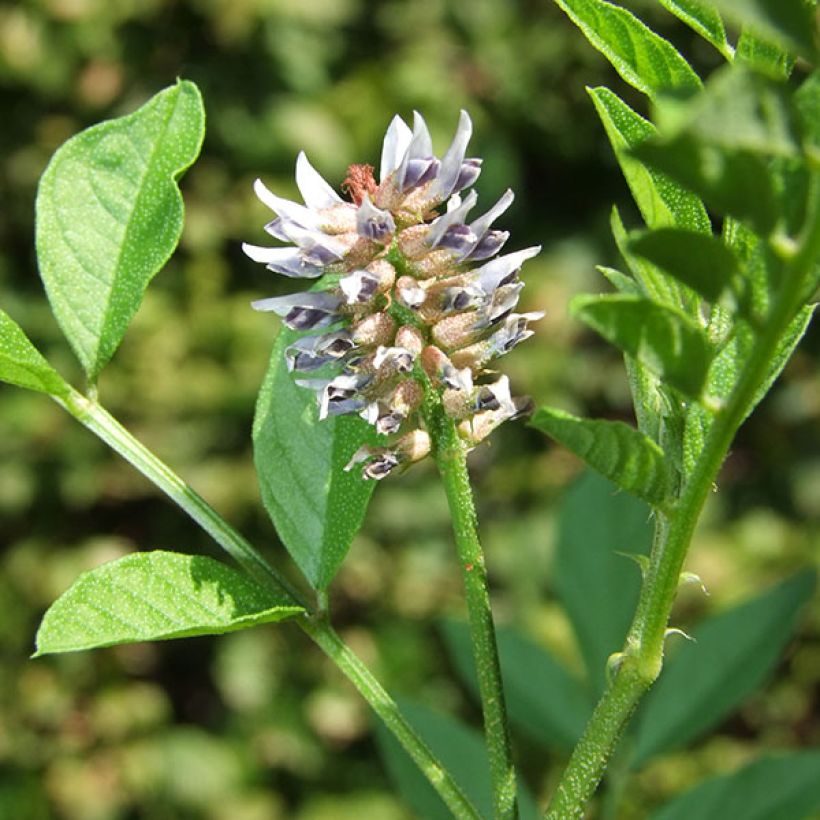

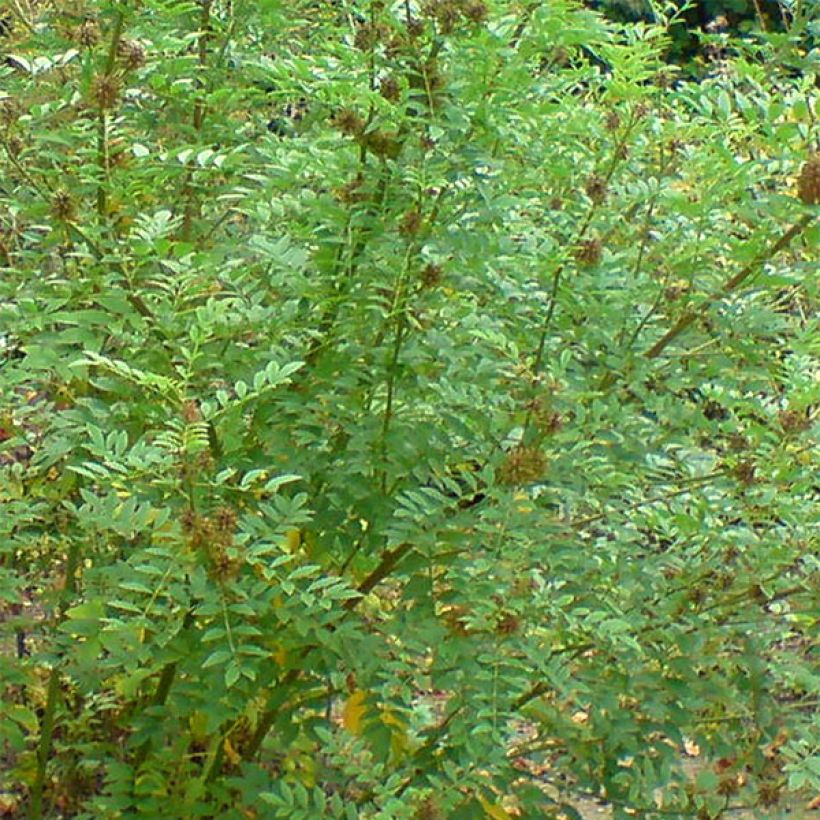

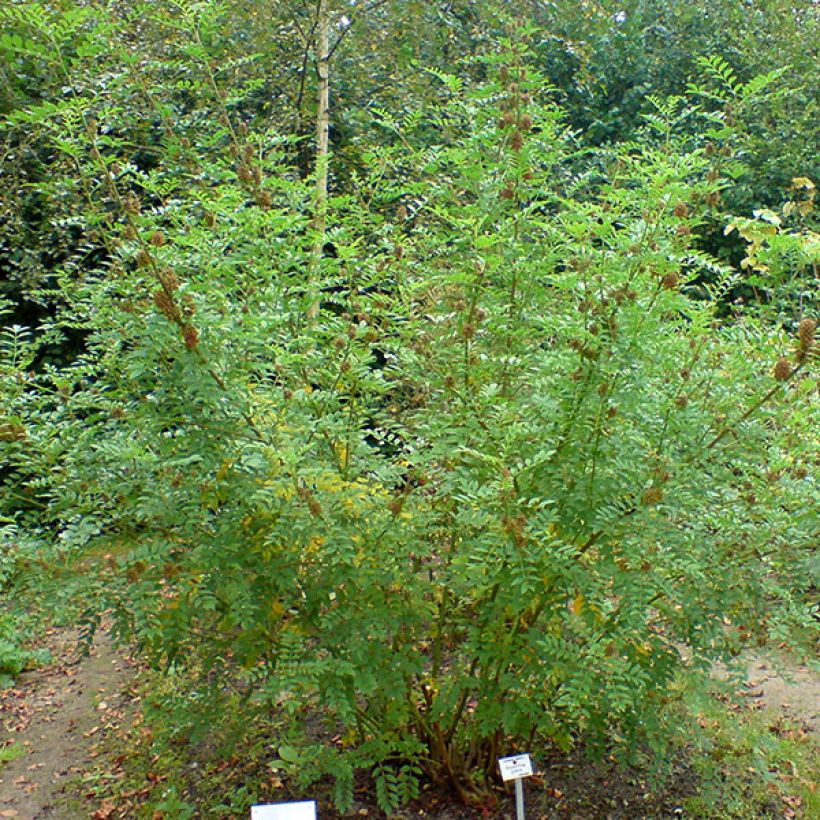

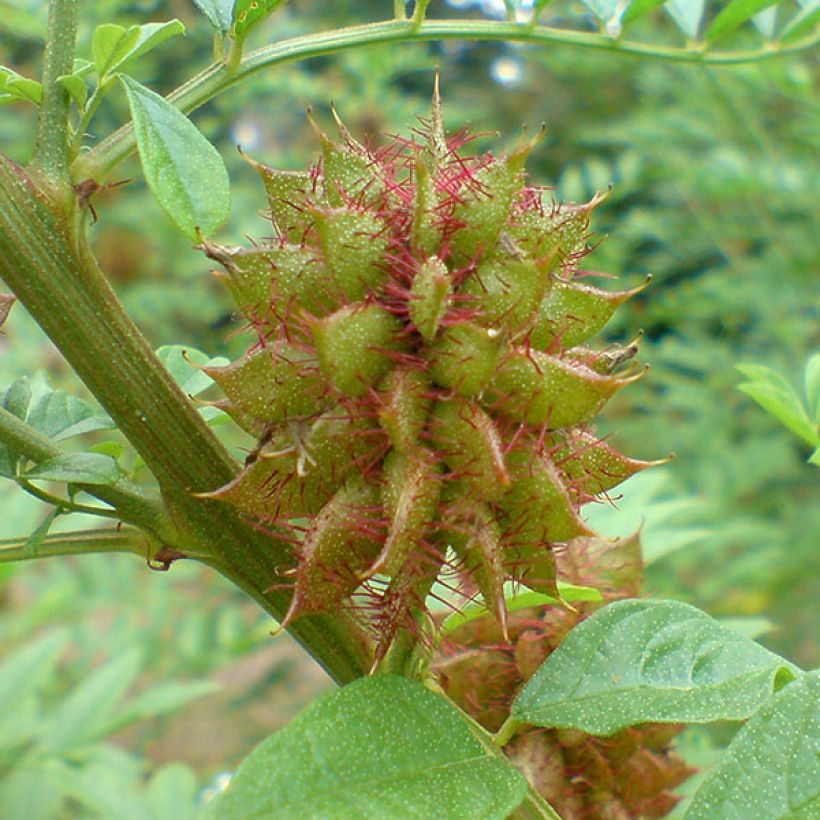

Flowering
Foliage
Plant habit
Botanical data
Glycyrrhiza
glabra
Fabaceae
Liquorice, Licorice, Spanish juice plant, Spanish liquorice, Sweetwood
Mediterranean
Other Perennials A to Z
View all →Planting and care
Although hardy to -12 to -15°C (10.4 to 5°F), it has retained a preference for warm climates and long summers. It thrives in full sun and in fertile, supple, clay-rich, deep, and well-drained soil. It tolerates limestone well, and its roots require loose soil to spread freely. Liquorice tolerates drought well, but it likes to keep its feet cool, so remember to generously mulch it to protect it from both summer drought and winter cold. It is a fairly hungry plant, so add compost before planting and every year thereafter.
Planting period
Intended location
Care
Planting & care advice
This item has not been reviewed yet - be the first to leave a review about it.
Haven't found what you were looking for?
Hardiness is the lowest winter temperature a plant can endure without suffering serious damage or even dying. However, hardiness is affected by location (a sheltered area, such as a patio), protection (winter cover) and soil type (hardiness is improved by well-drained soil).

Photo Sharing Terms & Conditions
In order to encourage gardeners to interact and share their experiences, Promesse de fleurs offers various media enabling content to be uploaded onto its Site - in particular via the ‘Photo sharing’ module.
The User agrees to refrain from:
- Posting any content that is illegal, prejudicial, insulting, racist, inciteful to hatred, revisionist, contrary to public decency, that infringes on privacy or on the privacy rights of third parties, in particular the publicity rights of persons and goods, intellectual property rights, or the right to privacy.
- Submitting content on behalf of a third party;
- Impersonate the identity of a third party and/or publish any personal information about a third party;
In general, the User undertakes to refrain from any unethical behaviour.
All Content (in particular text, comments, files, images, photos, videos, creative works, etc.), which may be subject to property or intellectual property rights, image or other private rights, shall remain the property of the User, subject to the limited rights granted by the terms of the licence granted by Promesse de fleurs as stated below. Users are at liberty to publish or not to publish such Content on the Site, notably via the ‘Photo Sharing’ facility, and accept that this Content shall be made public and freely accessible, notably on the Internet.
Users further acknowledge, undertake to have ,and guarantee that they hold all necessary rights and permissions to publish such material on the Site, in particular with regard to the legislation in force pertaining to any privacy, property, intellectual property, image, or contractual rights, or rights of any other nature. By publishing such Content on the Site, Users acknowledge accepting full liability as publishers of the Content within the meaning of the law, and grant Promesse de fleurs, free of charge, an inclusive, worldwide licence for the said Content for the entire duration of its publication, including all reproduction, representation, up/downloading, displaying, performing, transmission, and storage rights.
Users also grant permission for their name to be linked to the Content and accept that this link may not always be made available.
By engaging in posting material, Users consent to their Content becoming automatically accessible on the Internet, in particular on other sites and/or blogs and/or web pages of the Promesse de fleurs site, including in particular social pages and the Promesse de fleurs catalogue.
Users may secure the removal of entrusted content free of charge by issuing a simple request via our contact form.
The flowering period indicated on our website applies to countries and regions located in USDA zone 8 (France, the United Kingdom, Ireland, the Netherlands, etc.)
It will vary according to where you live:
- In zones 9 to 10 (Italy, Spain, Greece, etc.), flowering will occur about 2 to 4 weeks earlier.
- In zones 6 to 7 (Germany, Poland, Slovenia, and lower mountainous regions), flowering will be delayed by 2 to 3 weeks.
- In zone 5 (Central Europe, Scandinavia), blooming will be delayed by 3 to 5 weeks.
In temperate climates, pruning of spring-flowering shrubs (forsythia, spireas, etc.) should be done just after flowering.
Pruning of summer-flowering shrubs (Indian Lilac, Perovskia, etc.) can be done in winter or spring.
In cold regions as well as with frost-sensitive plants, avoid pruning too early when severe frosts may still occur.
The planting period indicated on our website applies to countries and regions located in USDA zone 8 (France, United Kingdom, Ireland, Netherlands).
It will vary according to where you live:
- In Mediterranean zones (Marseille, Madrid, Milan, etc.), autumn and winter are the best planting periods.
- In continental zones (Strasbourg, Munich, Vienna, etc.), delay planting by 2 to 3 weeks in spring and bring it forward by 2 to 4 weeks in autumn.
- In mountainous regions (the Alps, Pyrenees, Carpathians, etc.), it is best to plant in late spring (May-June) or late summer (August-September).
The harvesting period indicated on our website applies to countries and regions in USDA zone 8 (France, England, Ireland, the Netherlands).
In colder areas (Scandinavia, Poland, Austria...) fruit and vegetable harvests are likely to be delayed by 3-4 weeks.
In warmer areas (Italy, Spain, Greece, etc.), harvesting will probably take place earlier, depending on weather conditions.
The sowing periods indicated on our website apply to countries and regions within USDA Zone 8 (France, UK, Ireland, Netherlands).
In colder areas (Scandinavia, Poland, Austria...), delay any outdoor sowing by 3-4 weeks, or sow under glass.
In warmer climes (Italy, Spain, Greece, etc.), bring outdoor sowing forward by a few weeks.































